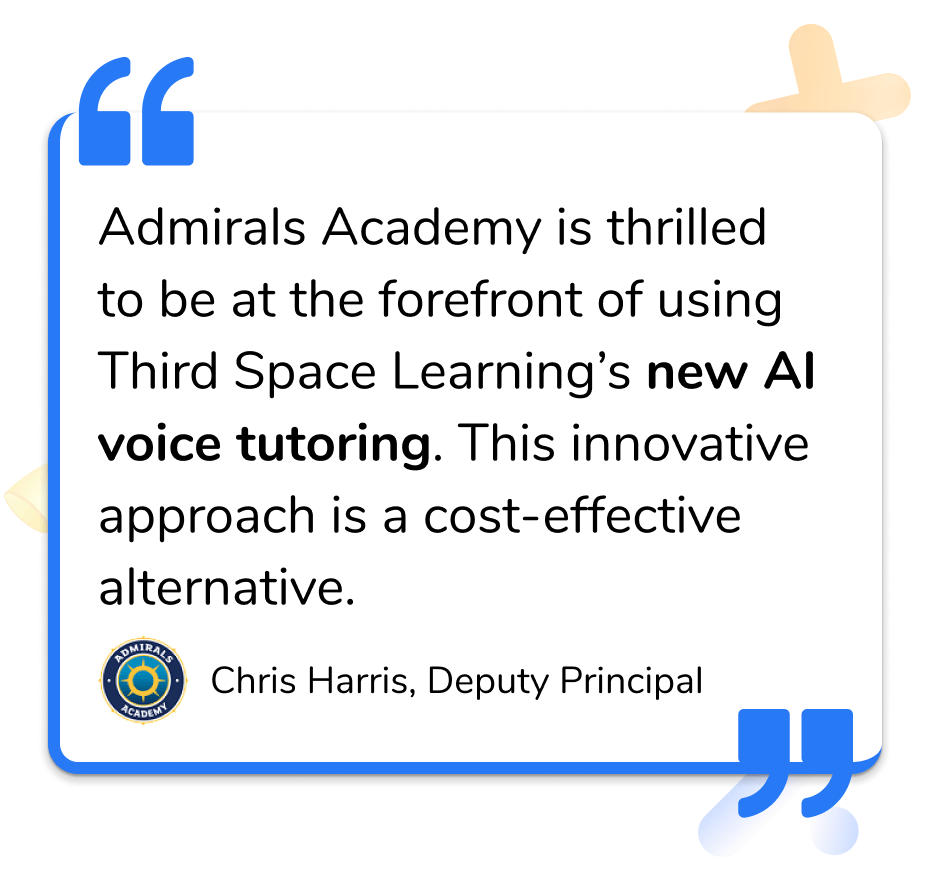SIXTH GRADE MATH TUTORING
Give the best start to 6th grade middle school math
Many 6th graders find the transition from elementary school to middle school math challenging and often need help with 6th grade math.
6th graders need focused math help to close gaps and grow in confidence.
Give your target students a smoother transition with personalized one-on-one online math tutoring from specialist tutors.

The increased mathematical fluency in students with a range of abilities makes it a very effective tutoring program.
Rachel MacInnes
St Paul’s Middle School
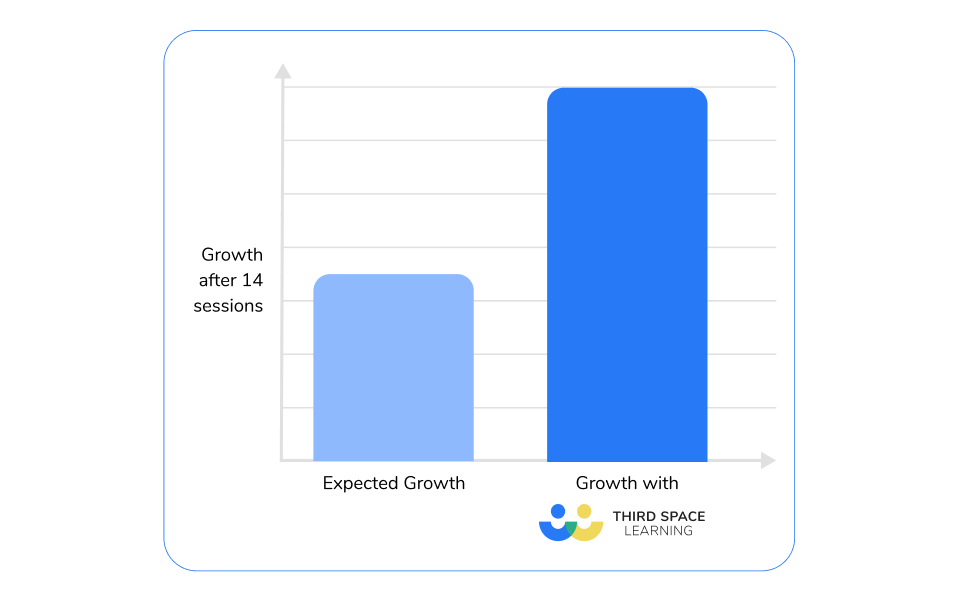
Benefits of 6th Grade Math Tutoring
The jump between 5th grade math and middle school math can be challenging for many 6th graders.
Starting online math tutoring program for 6th graders helps reinforce math concepts they will need to keep up throughout middle and high school.
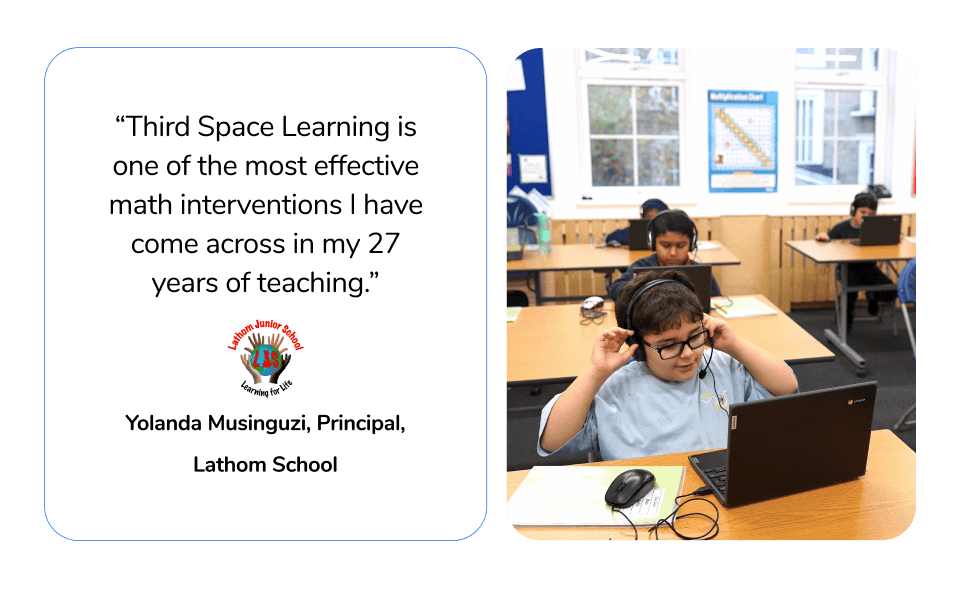
Develop problem solving
6th graders are building on their elementary math skills, tackling more complex problem-solving and harder word problems.
One-on-one online math tutoring sessions provide extra opportunities for sixth grade students struggling to keep up with the pace of the middle school math curriculum.
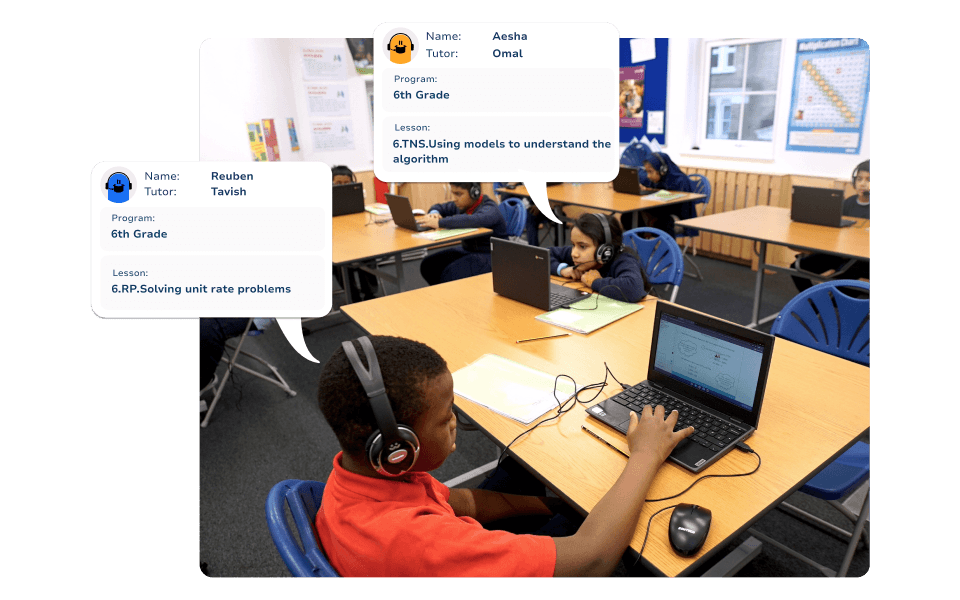
Individualized online math tutoring
Often, 6th grade math students benefit from different teaching styles but differentiating instruction for a whole math class can be challenging.
Each student works one-on-one with a private tutor who adapts instructions and math curriculum content in real-time according to the student’s needs.
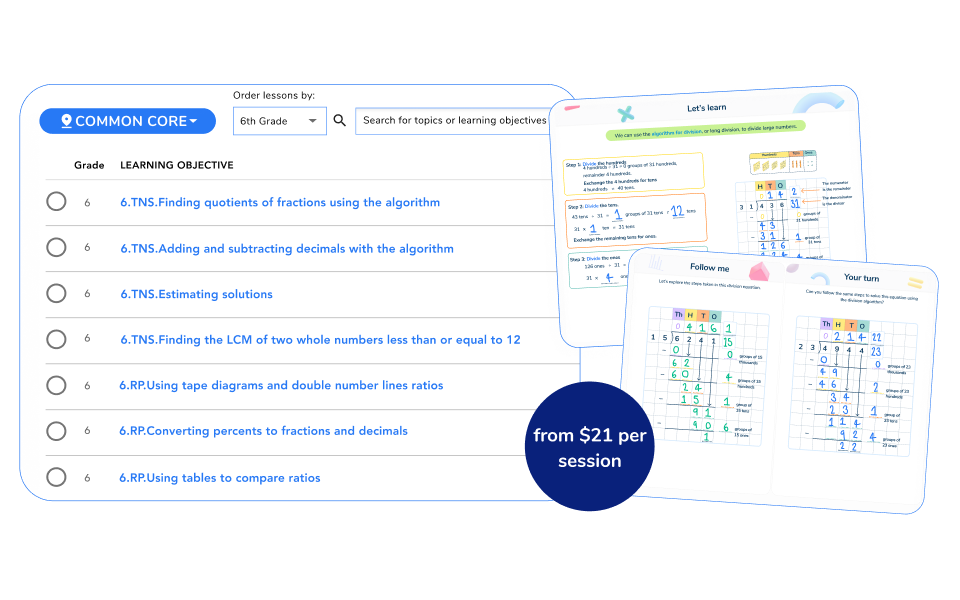
Expert 6th grade math tutoring
All math lesson plans are created by a team of math teachers and cover the 6th grade math curriculum for every US state and Common Core.
Third Space Learning’s sixth grade tutors are STEM specialists — it’s like bringing in multiple high-quality interventionists into your school without the price tag.
Preview 6th grade math tutoring lessons
Preview 6th grade math tutoring lessons
Specially created lessons designed to build conceptual understanding and enable tutors to respond to students’ needs in real-time:
-
Example lesson 1
-
Example lesson 2
-
Example lesson 3
Interpreting quotients of fractions with models
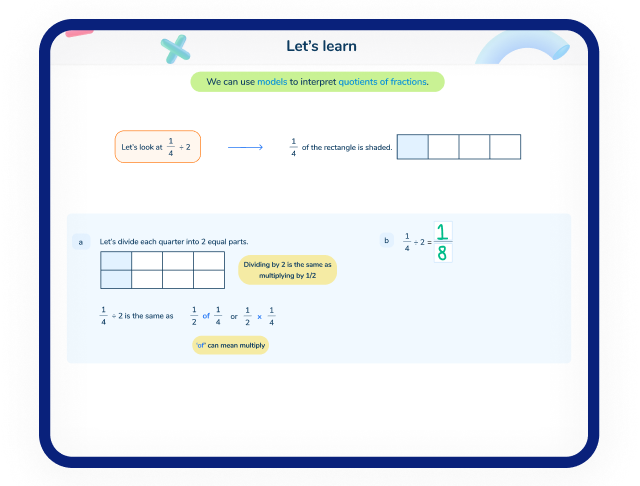
Let’s learn
The first question introduces each concept and helps students feel ready to learn
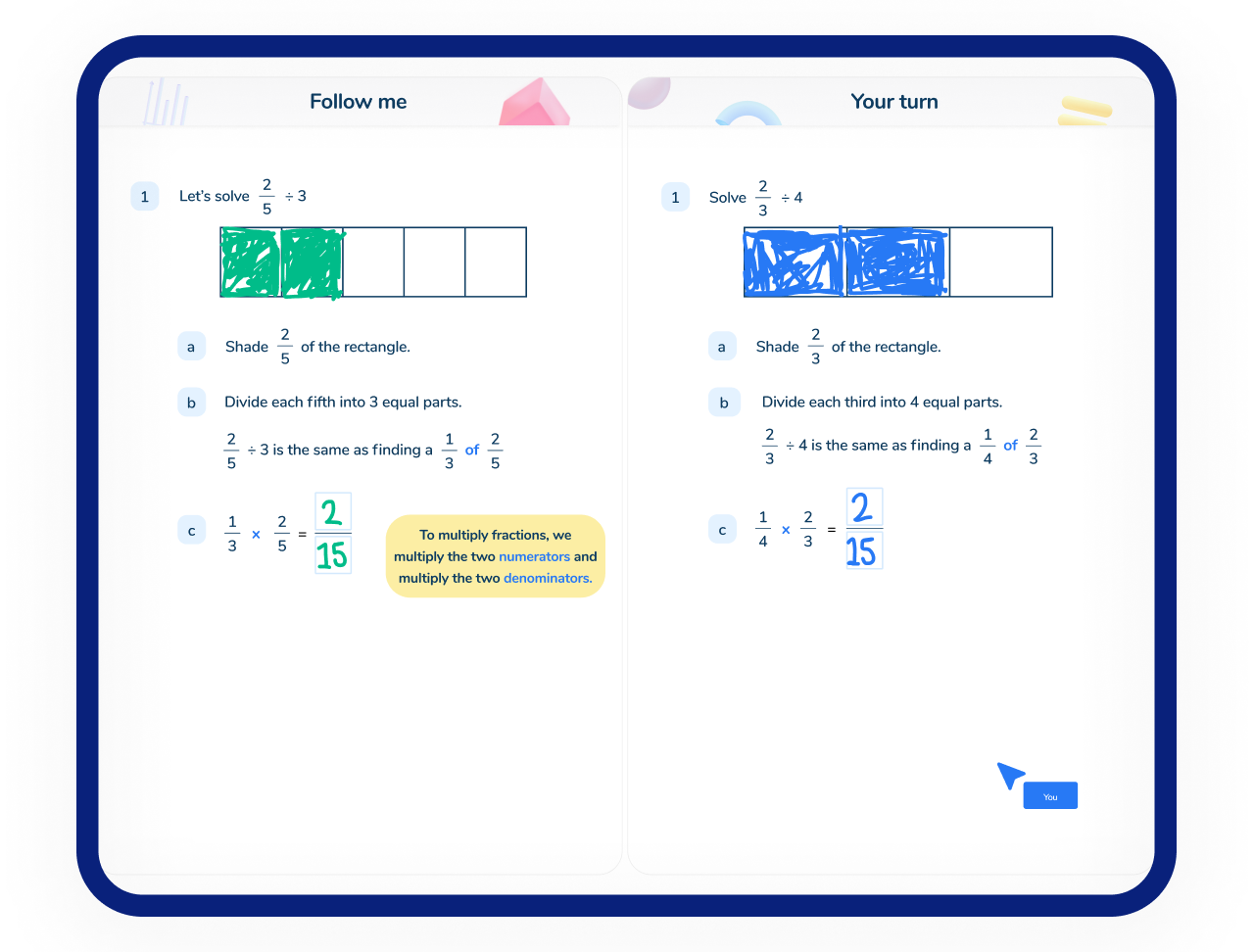
Follow me + your turn
Students work through a scaffolded example with their tutor before trying a similar question on their own
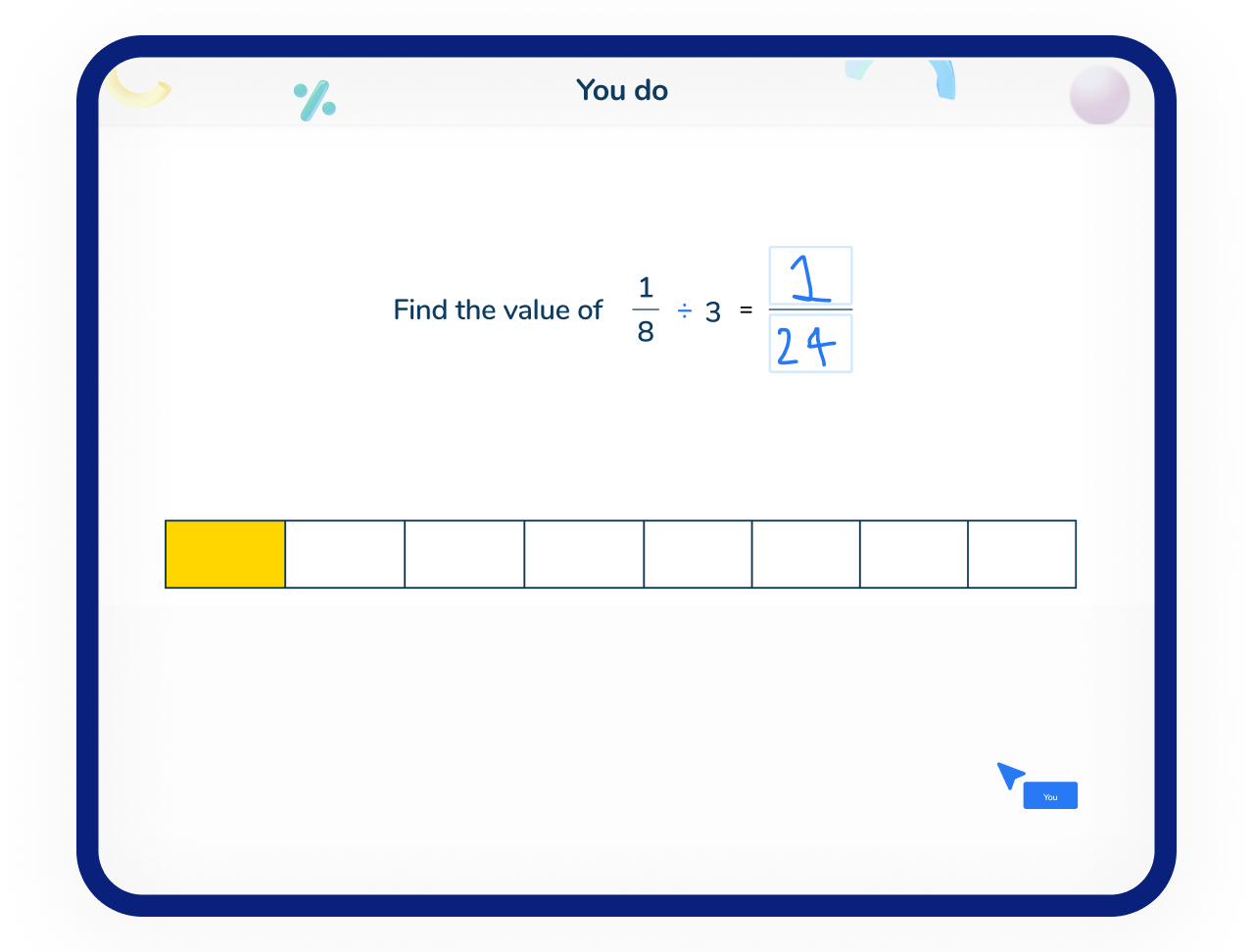
You do
A carefully sequenced next question ensures students can apply knowledge to different contexts
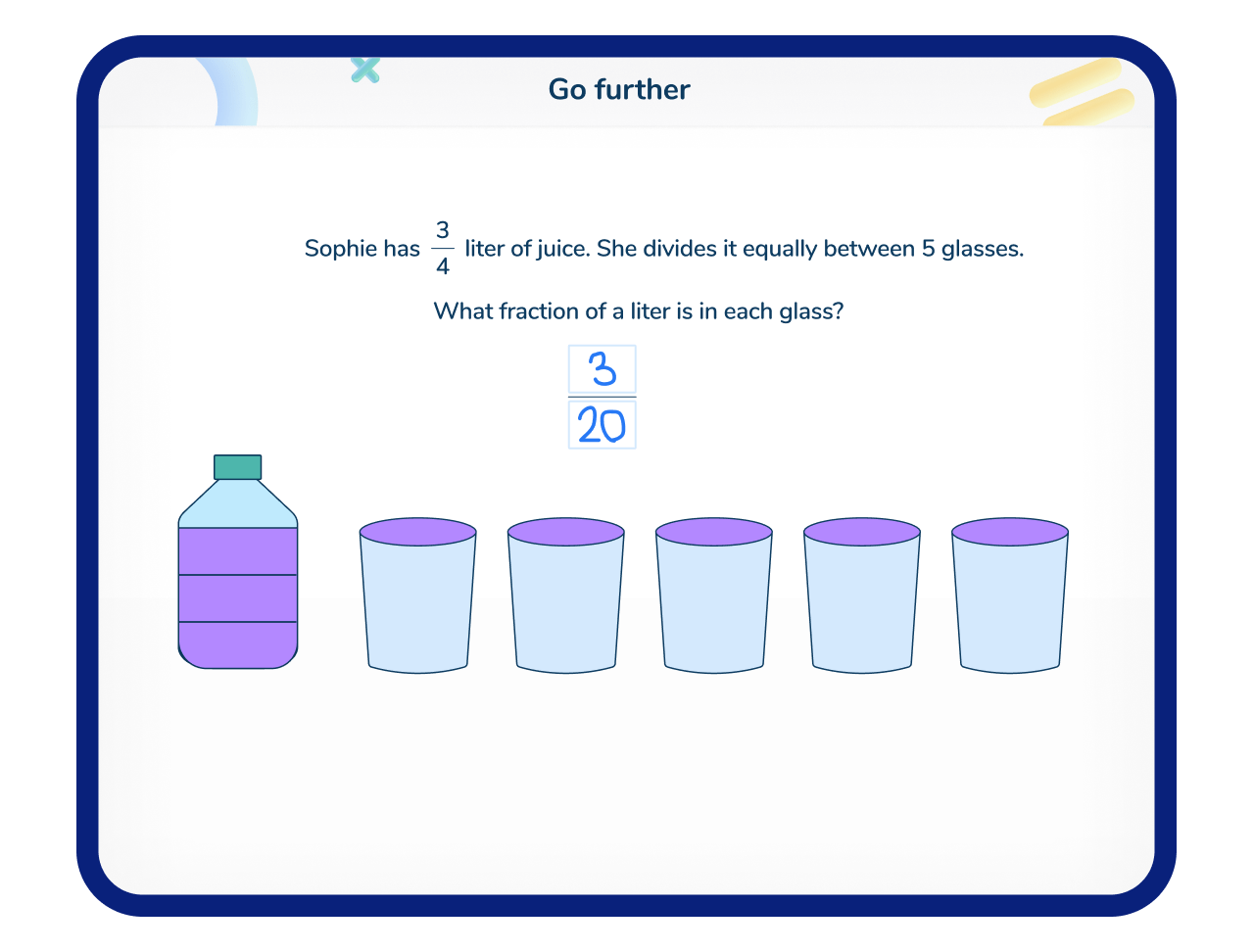
Go further
This gives students an opportunity to apply their knowledge to problem solving and reasoning questions
Finding quotients of fractions using the algorithm
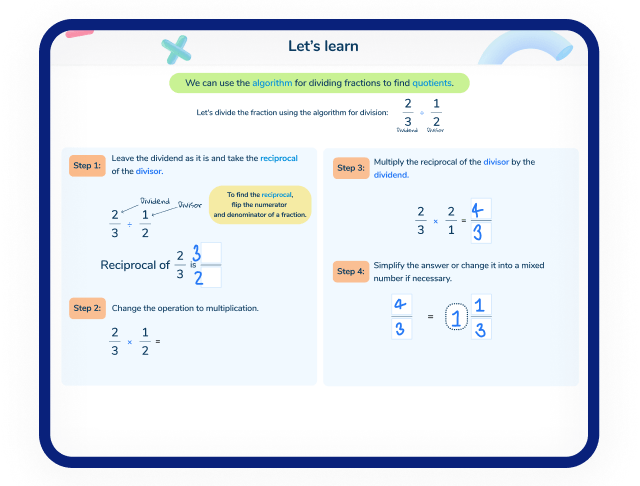
Let’s learn
The first question introduces each concept and helps students feel ready to learn
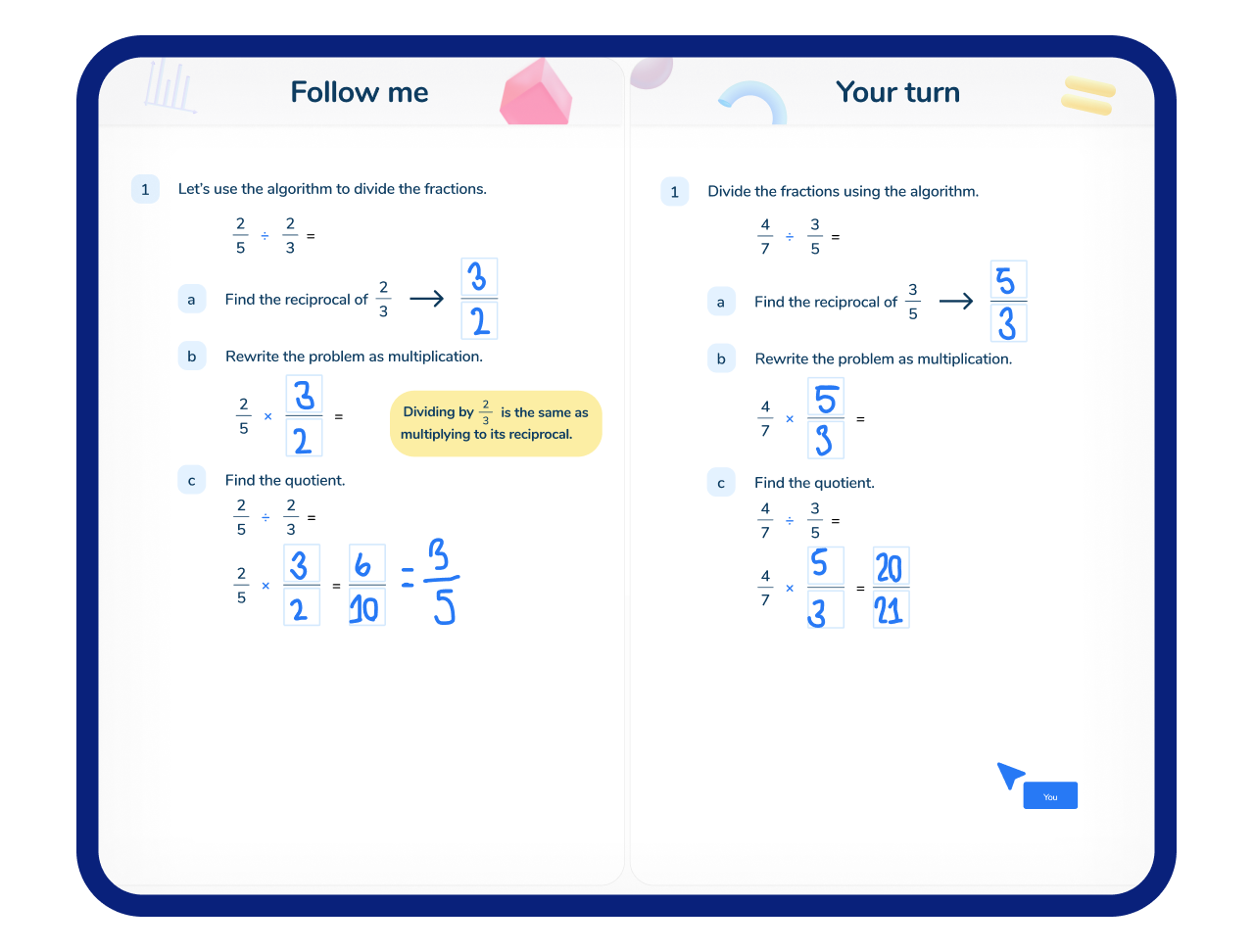
Follow me + your turn
Students work through a scaffolded example with their tutor before trying a similar question on their own
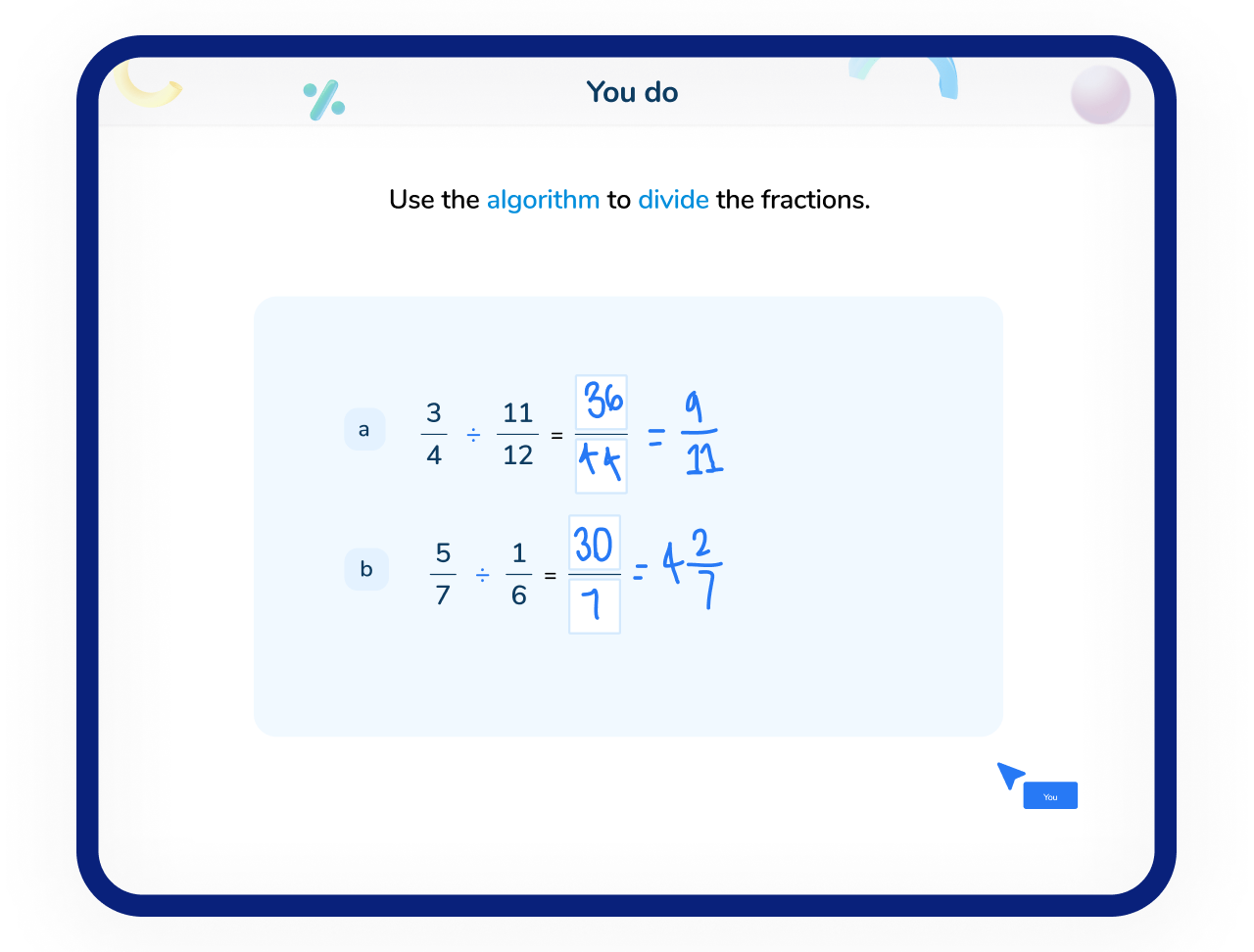
You do
A carefully sequenced next question ensures students can apply knowledge to different contexts
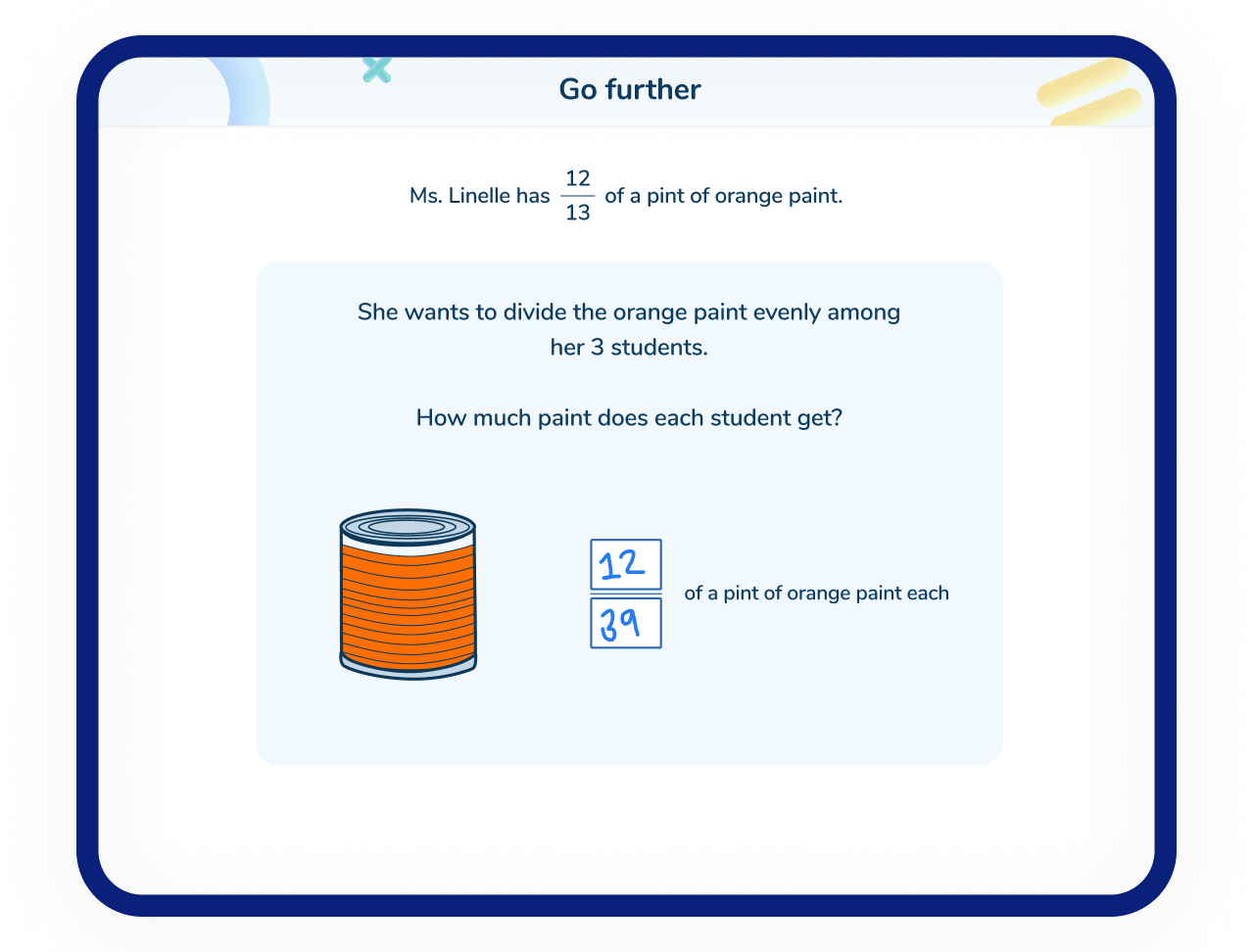
Go further
This gives students an opportunity to apply their knowledge to problem solving and reasoning questions
Using the algorithm for division
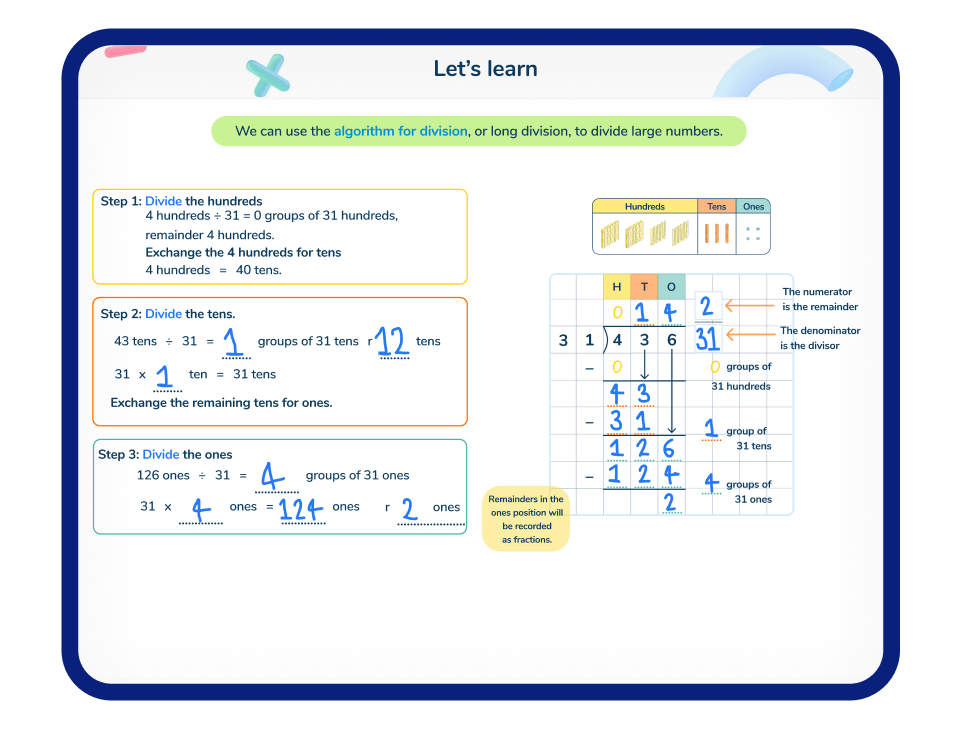
Let’s learn
The first question introduces each concept and helps students feel ready to learn
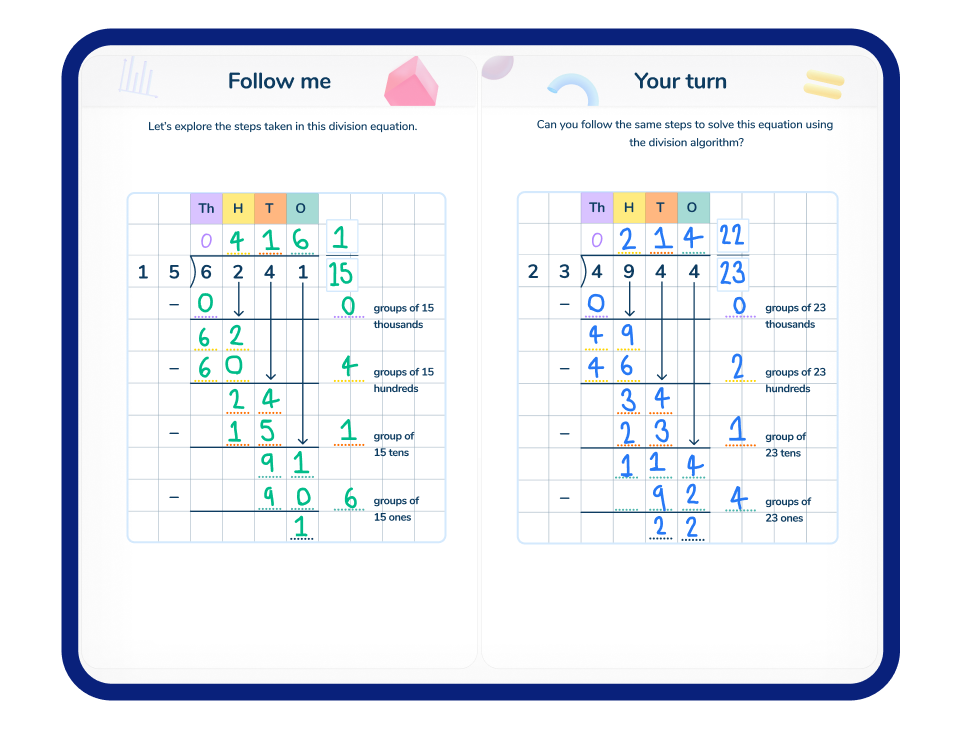
Follow me + your turn
Students work through a scaffolded example with their tutor before trying a similar question on their own
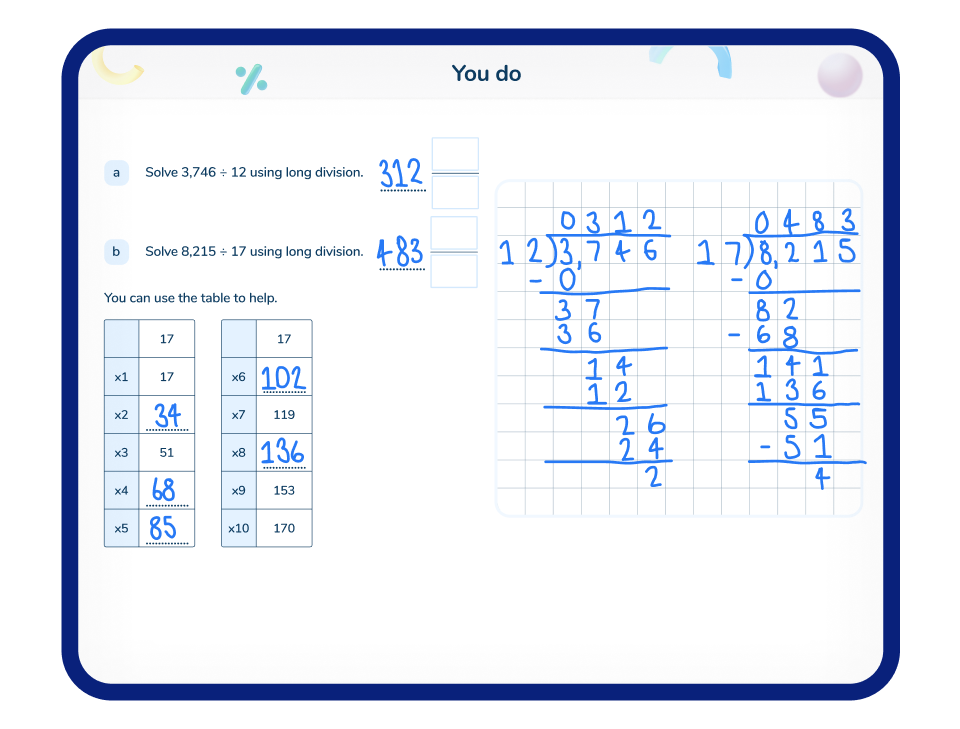
You do
A carefully sequenced next question ensures students can apply knowledge to different contexts
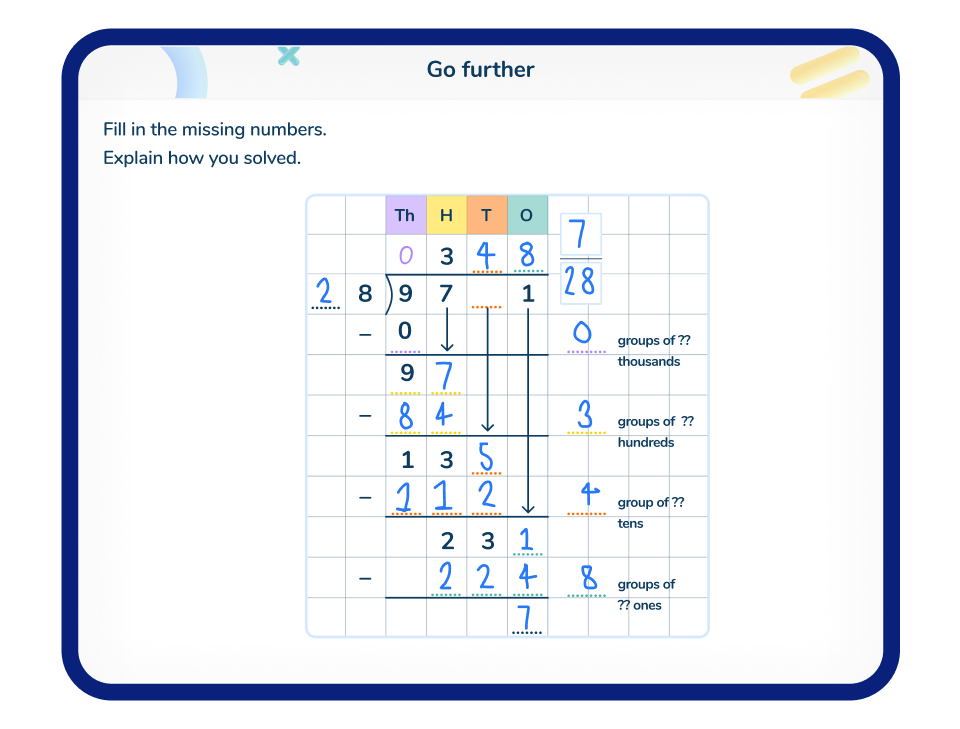
Go further
This gives students an opportunity to apply their knowledge to problem solving and reasoning questions
6th grade scope and sequence
Whether you have students who would benefit from more opportunities to practice 6th grade standards or who have existing gaps from previous grades, we’ve got a program for your 6th grade students.
Click on the program name to view the full scope and sequence.
Whether you have students who would benefit from more opportunities to practice 6th grade standards or who have existing gaps from previous grades, we’ve got a program for your 6th grade students.
Click on the program name to view the full scope and sequence.
6th Grade Program
Best for: Students with gaps from 6th grade
Programme goal: Master 6th grade standards
6th Grade Program
Learning objectives covered in this program:
Third Space Learning lessons are available for all state standards and for Common Core.
Defining and writing ratios
Writing and defining rate and unit rate
Comparing ratios to solve problems
Solving unit rate problems
Using tape diagrams and double number lines ratios
Solving percent problems
Using tables to compare ratios
Converting percents to fractions and decimals
Interpreting quotients of fractions (models)
Finding quotients of fractions using the algorithm
Using the algorithm for division
Adding and subtracting decimals with the algorithm
Multiplying decimals with the algorithm
Dividing decimals with the algorithm
Using models to understand the algorithm
Estimating solutions
Finding GCF of two whole numbers less than or equal to 100
Finding the LCM of two whole numbers less than or equal to 12
Rewriting numerical expressions using distributive property
Interpreting a number and its opposite through real world application
Representing and interpreting rational numbers on the number line
Writing comparison statements for rational numbers
Identifying and interpreting absolute value of rational numbers
Graphing ordered pairs on the coordinate plane
Writing and evaluating expressions with exponents
Reading and writing algebraic expressions
Evaluating algebraic expressions
Identifying and creating equivalent expressions
Using the distributive property
Combining like terms
Interpreting and writing equations
Solving one-step equations
Interpreting and writing inequalities
Solving one-step inequalities
Modeling to solve equations
Using number line to solve equations and inequalities
Identifying and analyzing independent and dependent variables
Using tables to analyze independent and dependent variables
Using graphs to analyze independent and dependent variables
Finding area of triangles
Finding area of quadrilaterals and triangles on the coordinate plane
Finding area of quadrilaterals by decomposing into triangles and rectangles
Finding volume of rectangular prisms with fractional edges
Finding the surface area of prisms and pyramids
Visualizing surface area through nets
Defining and writing statistical questions
Describing the center and spread of dot plot
Calculating mean and median
Creating box plots
Interpreting box plots
Interpreting histograms
Creating histograms
About this program
Lessons focus on securing 6th grade standards to enable students to successfully move on to 7th grade.
How are lessons ordered?
The default order has been set by our academic team to align with your state standards. Schools can pick one of our alternative sequences to re-prioritize domains, or send us their assessment data for us to pick the most appropriate sequence.
Want to speak to our friendly team? Book a call.
5th Grade Program
Best for: Students with gaps from 5th grade
Programme goal: Master 5th grade standards
5th Grade Program
Learning objectives covered in this program:
Third Space Learning lessons are available for all state standards and for Common Core.
Expressions involving parentheses
Evaluating expressions using the order of operations
Interpreting expressions without solving them
Generating numerical patterns given two rules in a real-world situation
Identifying, recording and graphing ordered pairs
Interpreting data using coordinate plane
Reading and writing decimals in numeral, word, and expanded forms
Reading and writing decimals to the thousandths place
Comparing decimals to the hundredths place
Comparing and ordering decimals to the thousandths place
Rounding numbers to the nearest tenth
Rounding numbers to the nearest hundredth
Understanding place value relationships in multi-digit numbers
Multiplying and dividing whole numbers and decimals by 10 and 100
Multiplying and dividing whole numbers and decimals by powers of 10
Finding number pairs that equal 1
Adding and subtracting decimals using known facts
Adding and subtracting tenths and hundredths
Using mental methods to add and subtract whole numbers and decimals
Adding decimals using the standard algorithm
Adding whole numbers and decimals using the standard algorithm
Subtracting whole numbers and decimals using the standard algorithm
Multiplying and dividing decimals using known facts
Multiplying using the partial product method
Multiplying using the standard algorithm
Multiplying whole numbers using the standard algorithm
Dividing using the partial quotient method
Solving problems involving remainders
Solving mixed multiplication and division problems
Finding like denominators to add and subtract fractions
Adding and subtracting fractions with unlike denominators
Adding mixed numbers
Subtracting mixed numbers
Solving word problems involving adding and subtracting fractions with unlike denominators
Using benchmark fractions to estimate and assess reasonableness
Remainders as fractions
Solving word problems with answers as fractions
Finding fractions of a whole number
Multiplying a fraction by a fraction
Multiplying a fraction by a mixed number
Representing fraction products as rectangular areas
Interpreting multiplication as scaling
Solving word problems involving multiplication of fractions and mixed numbers
Solving word problems involving division of a unit fraction by a whole number
Solving word problems involving division of a whole number by a unit fraction
Converting metric units
Converting customary units
Solve problems from a line plot
Finding volume of rectangular prisms
Finding volume of composite shapes
Graphing points on a coordinate plane
Solving problems with points on a coordinate plane
About this program
Lessons focus on securing 5th grade standards to enable students to successfully move on to 6th grade.
How are lessons ordered?
The default order has been set by our academic team to align with your state standards. Schools can pick one of our alternative sequences to re-prioritize domains, or send us their assessment data for us to pick the most appropriate sequence.
Want to speak to our friendly team? Book a call.
4th Grade Program
Best for: Students with gaps from 4th grade
Programme goal: Master 4th grade standards
4th Grade Program
Learning objectives covered in this program:
Third Space Learning lessons are available for all state standards and for Common Core.
Multiplicative comparisons using bar models
Multiplication & Division word problems involving comparisons
Solving multiplication and division word problems
Multi-step multiplication and division word problems
Interpreting remainders
Multi-step addition and subtraction word problems
Multi-step word problems involving all operations
Estimating Solutions involving all four operations
Justifying answers using estimation
Finding Common Multiples
Finding Common Factors and Factor Pairs
Prime and composite numbers
Number patterns
Geometric patterns
Understanding place value relationships in multi-digit numbers
Reading and writing numbers in numeral, word, and expanded forms
Comparing numbers up to 1,000,000
Rounding multi-digit numbers to any place
Adding 4-digit numbers using the standard algorithm
Adding large numbers using the standard algorithm
Subtracting 4-digit numbers using the standard algorithm
Subtracting large numbers using the standard algorithm
Multiplying 2-digit numbers using the area model
Multiplying 2-digit numbers using the partial product method
Multiplying up to 3-digits using the partial product method
Multiplying up to 4-digits using the partial product method
Using mental strategies to divide
Multiplying and dividing mentally
Dividing using partitioning
Dividing 2-digit numbers using the area model
Dividing using the partial quotient method
Dividing using the partial quotient method with remainders
Recognizing equivalent fractions
Generating equivalent fractions
Comparing fractions using benchmark fractions
Comparing fractions using common denominators
Comparing fractions using common numerators
Composing and decomposing using unit fractions with like denominators
Understanding adding and subtracting fractions with like denominators
Decomposing fractions less than 1
Decomposing fractions and mixed numbers greater than 1
Adding and subtracting fractions with like denominators less than 1
Adding and subtracting fractions and mixed numbers with like denominators.
Converting mixed numbers and improper fractions
Word problems involving adding and subtracting of fractions with like denominators
Word problems involving adding and subtracting of mixed numbers with like denominators
Understanding multiplication of a whole number by a unit fraction
Understanding multiplication of a whole number by a non-unit fraction
Solving word problems involving multiplication of a whole by fraction
Finding equivalent fractions with denominators 10 and 100
Adding fractions with unlike denominators 10 & 100
Decimal notation for fractions with denominators of 10
Decimal notation for fractions with denominators of 100
Locating fractions and decimals on a number line
Comparing two decimals to the hundredths place
Identifying acute, right, and obtuse angles
Identifying parallel and perpendicular lines
Drawing lines and angles
Classifying quadrilaterals
Classifying triangles
Recognize lines of symmetry
Customary measurement conversions
Metric measurement conversions
Solving problems involving measurement
Finding the missing side length
Solving problems with area and perimeter
Composite area with missing sides
About this program
Lessons focus on securing 4th grade standards to enable students to successfully move on to 5th grade.
How are lessons ordered?
The default order has been set by our academic team to align with your state standards. Schools can pick one of our alternative sequences to re-prioritize domains, or send us their assessment data for us to pick the most appropriate sequence.
Want to speak to our friendly team? Book a call.
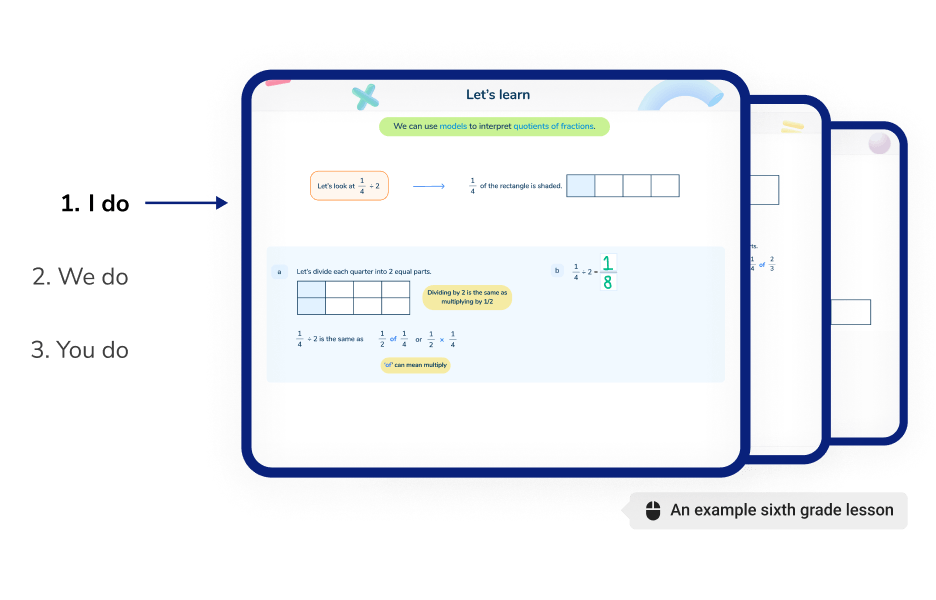
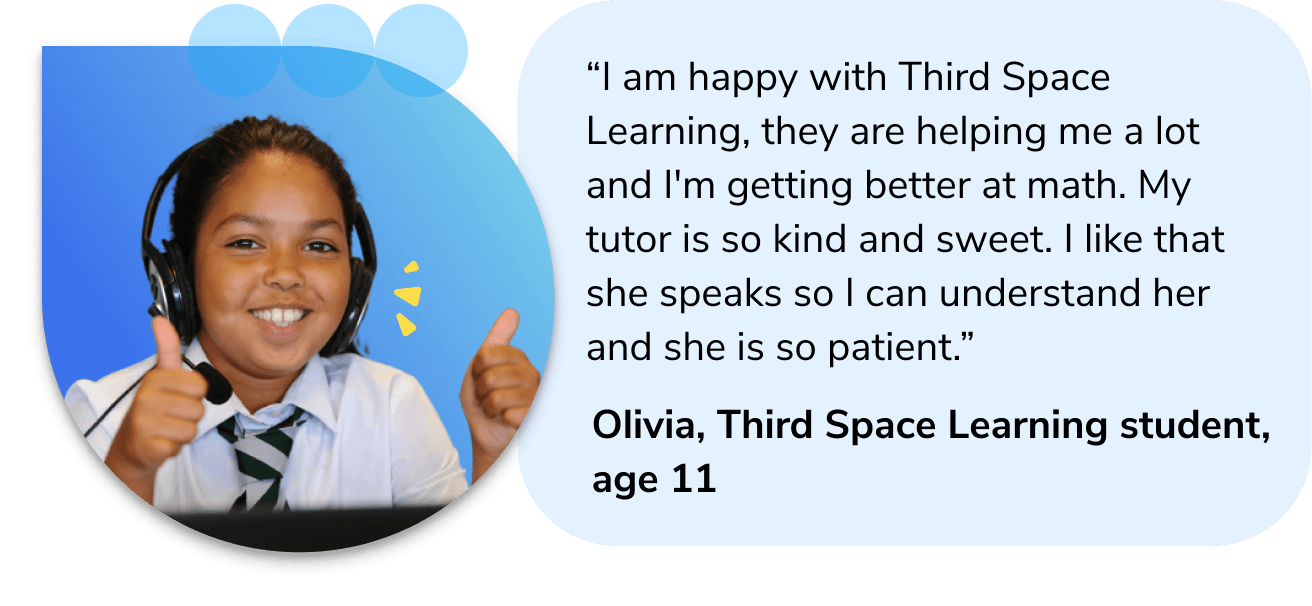
How it works in schools like yours
Personalized one-on-one online math tutoring for multiple 6th graders at once, delivered by specialist math tutors at a day and time that works for your school.
Book a free tutoring demo for your school or district
Explore the online classroom, preview lessons aligned to your state’s standards and see for yourself why 4,000+ schools like yours have chosen high impact one-on-one math tutoring from Third Space Learning:
Proven to accelerate math growth in half the time
2.4x cheaper than the average cost of one-on-one tutoring
Scalable and easy-to-implement across multiple grade levels and schools
Flexible scheduling according to your school and district’s needs
You can learn more about how we keep your data safe and secure in our privacy policy.
Frequently asked questions
How can I help my 6th grader with math?
To help your 6th grader with math, practice the four operations with fractions, decimals, percentages, order of operations as well as basic algebraic concepts. Utilize interactive tools and show more real-life examples to help support your 6th grader in developing problem-solving strategies for more complex equations and word problems.
What math is typically taught in 6th grade?
In 6th grade, math typically focuses on deepening understanding of fractions, decimals, and percentages, introducing ratios and proportions, basic algebraic concepts such as expressions and equations and geometry including area, surface area, and volume. Additionally, students work on enhancing their problem-solving and critical-thinking skills to more complex mathematical scenarios.
What math level should a 6th grader be?
By the end of 6th grade, students should be comfortable with arithmetic operations including fractions, decimals, and percentages, have an understanding of algebraic expressions and simple equations and be familiar with basic geometry concepts like area, volume, and surface area. They should also be able to apply these skills to solve real-world problems and understand the basics of data representation and analysis ahead of 7th grade math.
